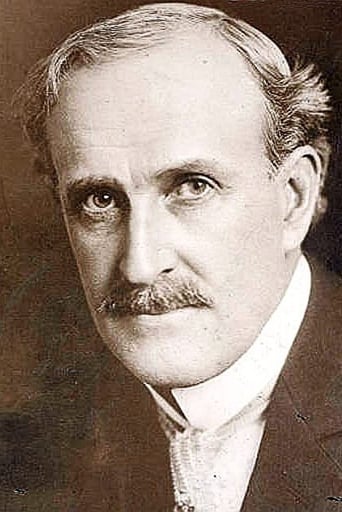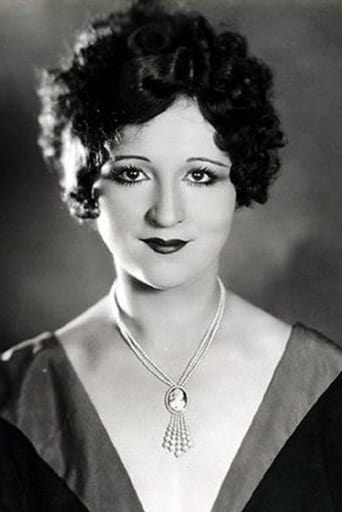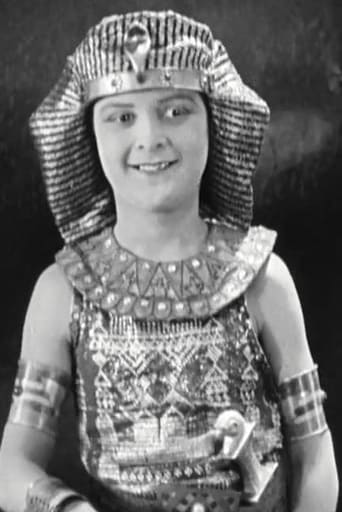LastingAware
The greatest movie ever!
NekoHomey
Purely Joyful Movie!
BelSports
This is a coming of age storyline that you've seen in one form or another for decades. It takes a truly unique voice to make yet another one worth watching.
lugonian
THE TEN COMMANDMENTS (Paramount, 1923), a super special production directed by Cecil B. DeMille, is the director's attempt in religious spectacle. Although DeMille already directed a story on Joan of Arc in JOAN THE WOMAN (1917), this is his attempt on doing something a little bit different from his previous efforts. As with the earlier silent classic of D.W. Griffith's INTOLERANCE (1916), consisting of four separate stories in no particular order, this edition to THE TEN COMMANDMENTS, unlike DeMille's most famous super four-hour 1956 edition starring Charlton Heston, this earlier 136 minute production combines Old Testament story according to Exodus followed by another story set in modern times. The Biblical portion, clocked at 50 minutes, as opposed to the modern-day story taking up much of the proceedings at 85 minutes, could have been a separate movie at best. With two movies for the price of one, THE TEN COMMANDMENTS simply shows God's Law being as relevant today as it was centuries ago.Opening Title: "Our modern world defined God as a "religious complex" and laughed at The Ten Commandments as OLD-FASHIONED. Then through the laughter came the shattering thunder of the World War. And now a blood drenched, bitter world - no longer laughing - cries for a way out. There is but one way out. It existed before it was engraved upon tablets of stone. It will exist when stone has crumbled. The Ten Commandments are not rules to obey as a personal favor to God. They are the fundamental principles without which mankind cannot live together. They are not laws they are the LAW."Prologue: Egypt, centuries ago, where slaves are seen pulling the wheels carrying a gigantic statue, with those getting whipped as they tire of such strenuous work. Ramesus, the Magnificent (Charles DeRoche) rules with no compassion while his sister, Miriam (Estelle Taylor) offers water to the abused slaves. Moses, the Lawgiver (Theodore Roberts), through the guidance of God's voice, leads His Children of Israel from bondage to the Promised Land. As Moses goes to Mount Sinai to speak to God in prayer, God answers him by posting on two tablets through volts of lightning his law he labels The Ten Commandments. In the meantime, his people are forsaking their God in favor of worshipping the Golden Calf. Modern Story: Widow Martha McTavish (Edythe Chapman) is an overly religious woman with two grown sons, John (Richard Dix), a carpenter, and Dan (Rod LaRocque), an atheist who fails to see his mother's logic in her beliefs. While eating at Dugan's Lunch Wagon, Dan encounters Mary Leigh (Leatrice Joy), a homeless young girl accompanied by her dog, out in the rain, stealing his food. Rather than having her arrested, Dan invites her to her home for dinner with the company of his suspicious mother and brother. Through the passage of time, John has fallen in love with Mary, but loses her to Dan. Dan doesn't prove himself a good husband as he practically breaks the Ten Commandments by having a mistress in Sally Lung (Nita Naldi) from Molokai Leper Island, and being the one responsible for one of his crooked deals by using bad concrete on a Cathedral he is constructing, and much more. For anyone expecting a near scene-by-scene original edition to DeMille's 1956 remake would be totally disappointed. The Biblical portion of the story shows great promise with lavish scale and costumes which makes one wish the entire story remained that way for about or under two hours. Theodore Roberts plays the white-bearded Moses to perfection, possibly his most famous movie role of his entire career. Special effects including the parting of the Red Sea is top notch, as is the visual style of the Ten Commandments flashing across the screen in full force. Though THE TEN COMMANDMENTS did prove successful in its standard form, the sudden change to modern theme seems out of place. For The Ten Commandments, it's the same then as it is today, which is what DeMille proposes to his movie audience of 1923. Those witnessing Edythe Chapman's performance as an overly religious and domineering mother could possibly relate to her character who has been raised in similar circumstance, with her forceful meaning turning away children from God rather than becoming closer. Rod LaRocque, who resembles that of actor Rudolph Valentino, convincingly plays the one who gets turned off by religion. Richard Dix, early in his career before his success in talkies and beyond, and he being the best known actor in the entire cast, should gather the most attention from movie buffs. And that's Agnes Ayres in a cameo playing an outcast for the modern story.Formerly presented on cable television's American Movie Classics (1993-1998), THE TEN COMMANDMENTS was also available on video cassette around the same time, accompanied by excellent organ score by Gaylord Carter. DVD with same scoring with crisp picture print condition features an added bonus of a commentary spoken by author, Katherine Orrison, whose historical accounts regarding this movie is most informative for those unfamiliar with THE TEN COMMANDMENTS according to DeMille. (***)
Michael Neumann
Cecil B. DeMille's silent epic certainly ranks among the most audacious Old Testament melodramas ever made, jumping in one dazzling edit from a 90-minute exodus out of ancient Egypt to modern (c. 1923) San Francisco, where the possibility of divine retribution is never more than a tremor away.The biblical prologue, a complete film in itself, condenses the material DeMille would later use for his entire 1956 remake, with a similar emphasis on spectacular set design, impressive special effects, and stoic overacting. But the plot really picks up steam after it shifts to the 20th century, depicting the fraternal rift between a crooked building contractor out to break all ten of the Lord's commandments, and his saintly younger brother (a carpenter, naturally). The older, unscrupulous sibling is cheating on the construction costs of a new cathedral, and because DeMille's God is a vengeful God the sinner pays a heavy penalty for his greed, indirectly killing his own mother when the walls come tumbling down, and later contracting leprosy from his deadly Eurasian mistress! The moralizing is no less heavy-handed than in most silent melodramas, but DeMille was always a better showman than a preacher, and at times it almost seems the unintended humor of this typically overwrought Sunday School lesson was deliberate.
John W Chance
The 50th anniversary DVD of the 1956 'The Ten Commandments' includes Cecil B. DeMille's original 1923 version. The restored print of this history making silent film is simply amazing, so sharp and crystal clear with zero flickering. Furthermore, this version is the same, the reverse and also different from the 1956 version.It's the same in that De Mille rebuilt the same set of Ramses' city -- larger than the towers built for D. W. Griffith's 'Intolerance' (1916)-- for the '56 version, used much of the same script, camera angles and other sets. It's the reverse, because as Katherine Orrison notes on the commentary track, if a shot was done from the right side in the '23 version, it was filmed from the left in the '56 version, and vice versa. She kids us not! She's written three books about "C.B." It is different from the '56 version in two major ways. First, the story of Moses begins with him giving the ninth plague (killing the first born), and ends with him hurling the 10 Commandments down at the revellers worshipping the Golden Calf below Mount Sinai. Second, the movie then becomes a second story (the Biblical scenes are called "The Prologue"), taking place in San Francisco."The Modern Story" is about the brothers John, a carpenter (Richard Dix) and Danny, an architect (Rod La Roque) and their struggles with morality. Danny vows to break all ten commandments, and by the end of the movie, he has. Like Ramses drowned in the Red Sea, Danny, escaping to Mexico in his speed boat 'Defiance' also drowns smashed on a large rock that looks suspiciously like Mount Sinai. Note: Before Richard Dix went on to fame and success in sound movies (mostly for RKO), he starred in many other silent films-- check out his great performance in 'The Vanishing American' (1925) as an Indian.Visually interesting throughout, the film even takes place on the construction site of the Catholic cathedral in Washington Square in San Francisco as it was being built. Actually shot in the outside construction elevator on the roof, you get to see a lot of the vista of 1923 San Francisco! Let's all meet at Washington Square for the 100th anniversary of this film! Plus the whole movie really works. What sets and costumes! The parting of the Red Sea in this version is even better than the 1956 one! I give it an 8.
blue-7
The exciting feature of the 50th Anniversary Editon of DeMille's THE TEN COMMANDMENTS is to be able to see the original 1923 version in a pristine print along with Katherine Orrison's illuminating commentary track. Previously only available on VHS tape with the poorly surviving colorized footage of the Exodus and Parting of the Red Sea (provided as a separate Extra on the DVD)used, it was difficult to realize just how beautifully done the silent epic was. Paramount has cleaned up the print and used only the better surviving black & white elements for this release. The beauty of the photography comes through with great clarity. Orrison's commentary is full of interesting insights as well as being enjoyable due to her enthusiasm about so many details. And Gaylord Carter's Wurlitzer Pipe Organ score is very impressive (as well as being a marvelous record of an organ score done by one who actually performed during the silent era)on this digital stereo recording. The 1956 remake looks and sounds great, as are the all of the special features for it, but this is exactly the same as the previous second edition of this title. I bought the new edition in order to see what they had done with the 1923 version -- and I certainly am impressed. Also, I love the packaging for this edition. Well worth updating as it is available at a very decent price.





